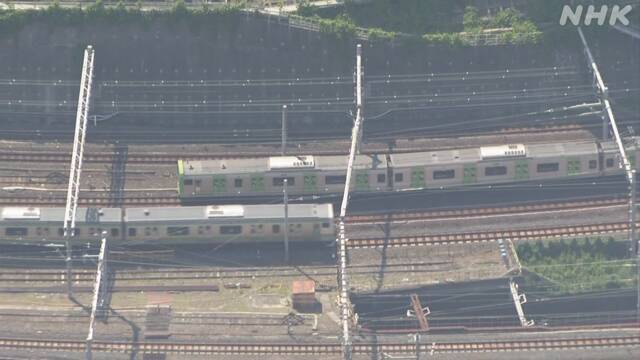Metropolitan area Rapid increase in railway users after cancellation of the emergency declaration New Corona June 7, 20:02
Since the declaration of an emergency situation was lifted nationwide, the number of railway users in the metropolitan area has increased rapidly.
According to JR East, people who used railroads in the Tokyo metropolitan area for 5 days from the 25th to the 29th of last month, when the emergency declaration was canceled nationwide, compared with the week before the emergency declaration was issued. 14% increase.
In addition, the number of passengers on the Yamanote line during the morning commute increased by 16% compared to the previous week.
Even by station, compared to the previous week, Shibuya station increased by 23%, Tokyo station and Shinjuku station increased by 22%, and the number of users at each station in Tokyo increased due to the cancellation of the emergency situation declaration. It means that
On the other hand, according to Tokyo Metro, from the 1st to the 4th of this month, the number of people who used all 179 stations, including all 9 routes including the Ginza line and Marunouchi line, was 52% to 56% of the same period last year.
This means that the number of emergency declarations has increased by 15 points compared to the week of the 25th of last month, which was lifted nationwide.
Railway companies provide congestion information
Railway companies have announced that congestion information has been released nationwide and the number of users has increased.
Among them, JR East provides a service that allows you to see the congestion status of the Yamanote line in near real time with an official mobile application, and on the website, you can see the congestion status inside the 12 lines and 13 sections of the Tokaido line and Chuo line. Offer for the past week.
In addition, major private railways in the Tokyo metropolitan area also introduce congestion hours for each route on their websites.
Railway companies continue to call for telework and staggered work to alleviate congestion.
Expert "If you take measures, the risk is not so high"
Regarding infection control on trains used for commuting to work and school, Mitsuo Kaku, a specially appointed professor at Tohoku Medical and Pharmaceutical University, who is familiar with infectious disease control, said, "At first glance, a crowded train is a closed, close, and densely packed "three dense" conditions It is easy to think that the infection risk is high, but if you take appropriate measures, the risk is not so high."
And it is said that three important measures that individuals can take are wearing a mask, refraining from using private language in the car, and washing their hands after reaching their destination.
Distance from person
In addition, it is desirable to keep the distance between people to about 2 meters, but unless you put on a mask and refrain from talking and keep your face extremely close, the risk is low.
Handrails/hanging leather
Regarding the use of handrails and straps, avoiding touching your face after use, and washing your hands as soon as you reach your destination will reduce the risk of infection.
Near the door/near the window
On the other hand, with regard to ventilation, the place where air passes is generally considered to have a low risk. However, even if there is air flow, there is a chance that air will fly around, so it is unlikely that the risk will be extremely low near train doors and around windows compared to other places.
“I can't reduce the risk of infection to zero, but I can reduce it to a considerable degree. It is important not to get too nervous, and to take measures to reduce points and use public transportation.” I am.

